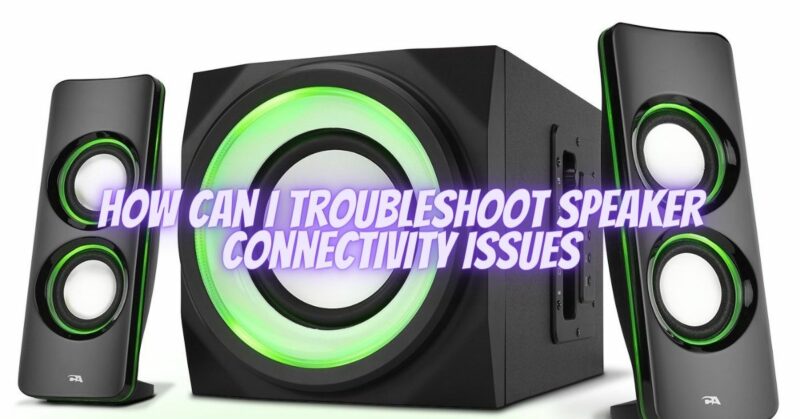Speaker connectivity issues can be frustrating when you’re looking forward to enjoying your favorite music or audio content. Fortunately, most connectivity issues can be resolved with some troubleshooting steps. In this article, we will guide you through a comprehensive troubleshooting process to help you identify and resolve common speaker connectivity problems, ensuring you can enjoy uninterrupted audio playback.
- Check Power and Cables:
Start by checking the power and cables connected to your speakers:
a. Power source: Ensure that your speakers are properly plugged into a power source and turned on. Verify that the power cables are securely connected and that the power outlet is functioning correctly.
b. Speaker cables: Inspect the speaker cables for any loose connections or damage. Ensure that the cables are securely connected to both the speakers and the audio source, such as an amplifier or receiver.
- Verify Source Device Settings:
Confirm that your source device settings are properly configured:
a. Volume level: Check that the volume level on your source device is not set too low or muted. Increase the volume to an audible level and test the speaker output.
b. Output selection: Ensure that the audio output is correctly selected on your source device. For example, if using a computer, check that the audio is set to output through the appropriate audio device or speakers.
- Test Different Audio Sources:
Try connecting your speakers to different audio sources to determine if the issue is specific to a particular device or audio source:
a. Switch audio sources: Connect your speakers to different devices, such as smartphones, tablets, or another audio system. If the speakers work with other devices, it suggests that the problem lies with the original audio source.
b. Test different audio files: Play various audio files to rule out the possibility of a specific file causing the issue. Try different formats, bit rates, or streaming services to see if the problem persists.
- Check Speaker Connections and Settings:
Ensure that the speaker connections and settings are properly configured:
a. Speaker wires: Check the speaker wire connections at both the speaker and the audio source. Make sure the positive and negative terminals are correctly aligned.
b. Speaker settings: Verify the speaker settings on your audio device, such as an AV receiver or amplifier. Ensure that the speaker channels are correctly assigned, and any crossover or equalization settings are properly adjusted.
- Update Firmware and Drivers:
If applicable, update the firmware or drivers for your speakers or audio devices:
a. Speaker firmware: Visit the manufacturer’s website to check for any available firmware updates for your speakers. Follow the provided instructions to update the firmware if necessary.
b. Device drivers: Update the drivers for your audio devices, such as sound cards or Bluetooth adapters, by visiting the manufacturer’s website or using the device manager on your computer.
- Reset and Reconnect:
If the above steps haven’t resolved the issue, try resetting and reconnecting your speakers:
a. Power cycle: Turn off the speakers, unplug them from the power source, and wait for a few minutes. Then, plug them back in and power them on.
b. Reconnect: Disconnect and reconnect the speaker cables at both ends, ensuring a secure and proper connection.
- Consult Manufacturer Support:
If the issue persists or you suspect a hardware malfunction, reach out to the manufacturer’s support for further assistance. They can provide specific troubleshooting steps or guide you through the warranty process if necessary.
Conclusion:
Troubleshooting speaker connectivity issues can be a systematic process that involves checking power and cables, verifying source device settings, testing different audio sources, inspecting speaker connections and settings, updating firmware and drivers, resetting and reconnecting, and seeking manufacturer support if needed. By following these steps, you can identify and resolve common connectivity problems, allowing you to enjoy uninterrupted audio playback and maximize the performance of your speakers.


